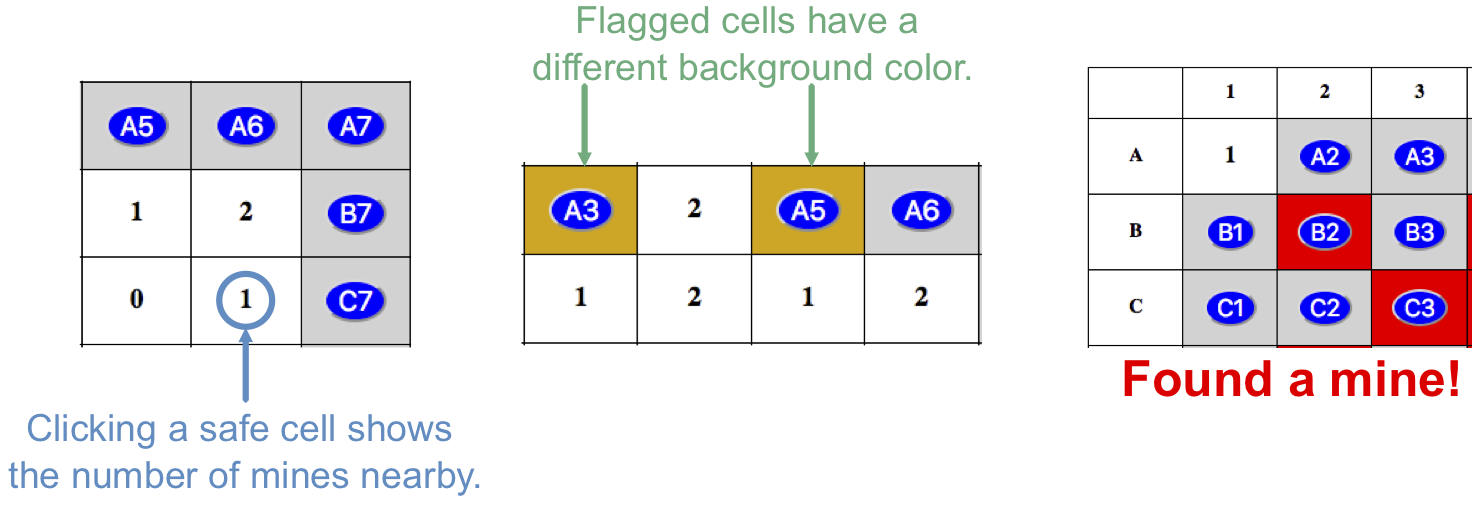25.6. Database Functions¶
When a player clicks a cell on the game board, several things might happen:
If the cell contains a mine, the game ends. The player blows up, all of the hidden mines are revealed, and any remaining buttons are deactivated.
If the cell does NOT contain a mine, the button is replaced by a number. This number tells the player how many mines are located in the spaces surrounding the cell.
If the Flag Mine checkbox is selected, the cell changes color when clicked. The button remains active.

Selected cells, flagged cells, and mined cells all show different background colors.¶
Our goal over the next two pages will be to get all of these behaviors working. We’ll start with the required database operations.
25.6.1. Add Code To crud.py¶
One of the central actions in the game is to display the number of mines around a clicked cell. This data needs to be known before the player makes their the first move. Let’s figure out how to gather the mine information and store it in the database.
Open the crud.py file in Visual Studio Code, then code along with each of
the following videos.
25.6.1.1. The record_mines() Function¶
25.6.1.2. The count_mines() Function¶
25.6.2. Video Summary¶
The Python code for our Minesweeper application is split across three files:
main.py,game_logic.py, andcrud.py. This provides several advantages:We keep related functions together, which helps organize our work.
We keep the individual files small.
Smaller files are easier to debug.
Any of the separate files can be used as modules in other projects.
The database functions are all located inside the
crud.pyfile.The
execute_query()function has one job - to run SQL queries and return the results. It is identical to the function we used in Part 2 of the Movie SQLs project.The
record_mines()function adds rows to theminestable. The function also updates theboardtable. Each action requires its own SQL query string, which will be formatted and executed as part of a loop.Note
Using the
countervariable works because theminesandboardtable are reset before each new game.If we wanted to add new data to existing content, we would need to use a different approach. We would have to write extra SQL queries, then use the results to match the
mine_idvalues in the two tables.The
count_mines()function runs oneSELECTquery on theboardtable. This collects the coordinates (likeB7) for each cell in the game board. Once that is done,count_mines()uses a loop to repeatedly call thecheck_surroundings()function.The
execute_query()function returns a list of results when it runs aSELECTquery. However, the elements in the list are NOT simple string values.To extract the cell coordinates from the list, we must access each element and include an
[index]value to retrieve the string.
A detailed review of the
check_surroundings()function will be done later in this chapter.
